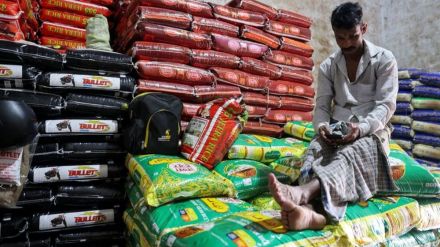Elevated retail inflation in cereals since September last year will likely stay in double digits for the next two to three months, efore softening, Niti Aayog Member Ramesh Chand said on Friday.
After a couple of months, inflation in cereals would move as per the kharif rice output and prevailing global prices, he said.
“Since grain prices have risen to a certain level, I see over the next two to three months, cereal inflation is likely to remain in the double digits,” Chand told FE.
The double-digit inflation in the coming months will also be contributed by a 7% rise in the minimum support price (MSP) of paddy for the 2023-24 crop year (July-June).
The arrival of paddy in the mandis officially commences on October 1.
Meanwhile, the area under paddy this kharif season has crossed 41.19 million hectare (MH) which is 1.89% more than previous year and 3.13% higher than the last five-year average as per the agriculture ministry statement on Friday.
Despite higher paddy acreage, yield could be impacted because of patchy rainfall in key paddy-growing regions in August. However, the agriculture ministry has projected a kharif rice production of 111 million tonne for 2023-24 crop year (July-June) the same level as last year.
On the government imposing several export control measures such as banning white rice shipment, and imposition of 20% export taxes on par-boiled rice, Chand said if timely intervention in terms of imposing export duty would not have been taken, it could have led to a spike in prices.
He said currently while wholesale rice prices in Vietnam and Thailand have crossed $600/tonne or more than Rs 50/kg, the domestic wholesale prices of rice have not crossed Rs 38/kg only because of these export curbs.
According to Chand, despite restrictions on rice exports, the total volume of shipment of grain would be more than 20 MT in the current fiscal as grains shipped as per the specific request from the country.
Since September 2022, the ‘cereals and products’ subgroup–carrying a weight of 9.67% in the overall CPI basket–has remained in double digits. In fact, in Augustcereals and products inflation was at an 11-month low of 11.85%, but that was due to the statistical effect of a high base.
An analysis of the data from the Ministry of Statistics and Programme Implementation shows wheat and rice–represented by items ‘wheat/atta other sources’ and ‘rice_other sources’–have stayed in double digits over the past several months. The two items together constitute about three-fourth of the cereals and products subgroup.
Even though wheat inflation fell slightly below 10% in August, and came in at 9.33%, inflation in rice remained elevated at 12.54%. Rice inflation has remained in double digits since October 2022 while wheat inflation stayed above 10% between June 2022 to July 2023.
To contain cereal prices, the government had announced the sale of 5 million tonne (MT) of wheat and 2.5 MT of rice from the central pool in the open market to bulk buyers in July.
In June 2023, for the first time in 15 years, the government imposed wheat stocking limits.
In the last couple of months, India imposed a ban on white rice exports and put a 20% export duty on par-boiled rice.
